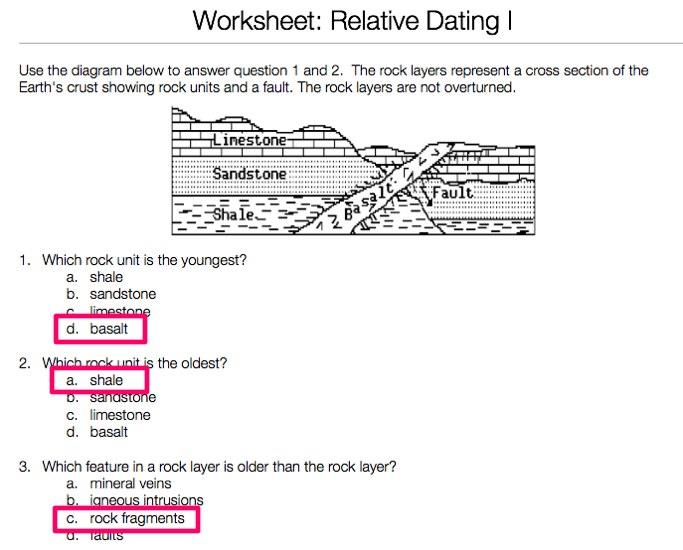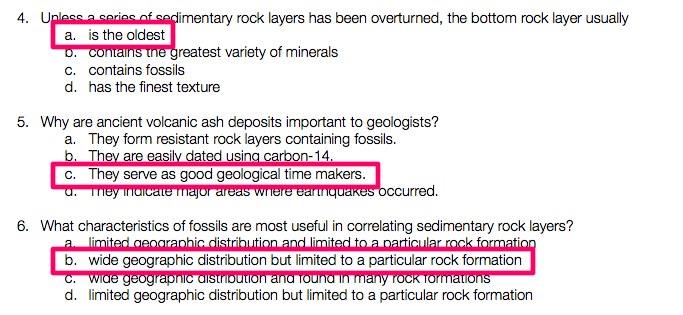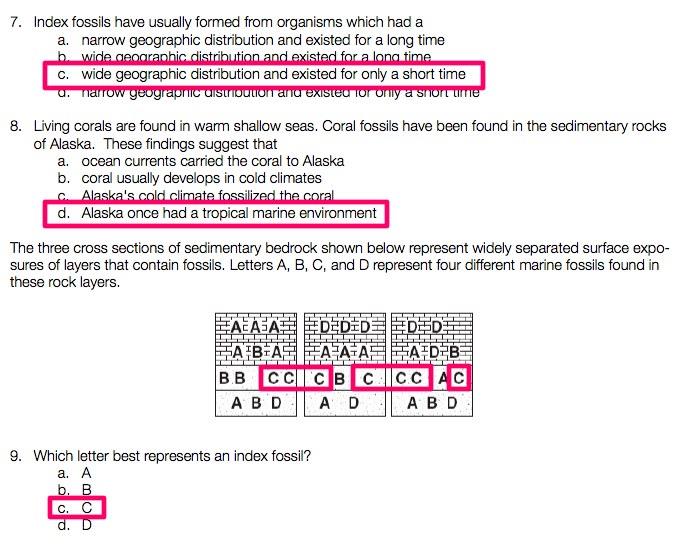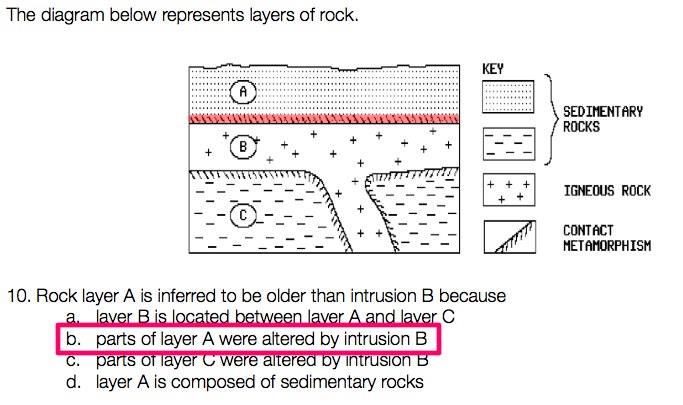-
Earth Science Journal!
Geologic History
Relative Dating: putting events or objects in order based on when they happened compared to each other. You do not need to know exactly when something happened, just if it happened before or after something else.
We do this all the time in our regular day-to-day lives. For example, let's put the following random movies in order of relative age from oldest to youngest:



We don't need to know what year any of these movies came out to place them in order of relative age.
Frozen is the oldest; Inside Out, Avengers Endgame, and then, The Little Mermaid.
Again, we have not stated anything about the actual age of these movies. We've just put them in order relative to one another.
The same thing can be done with geologic features in a rock outcrop.
To do this, geologists use the Laws of Relative Dating.
How do we determine a rock's relative age?
Take notes on the following in your journal.
1. Uniformitarianism - the idea that forces working on our planet today worked on our planet in the past in the same manner
“The present is the key to the past.”
2. Principle of Superposition - the bottom layer is the oldest, and each overlying layer gets progressively younger
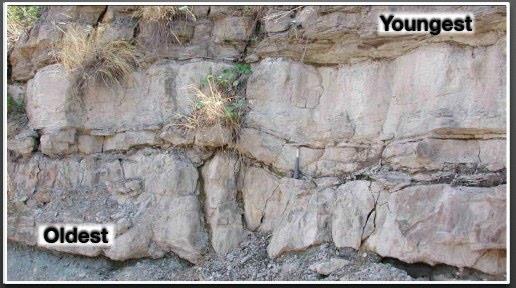
Draw and label a simple version of these layers.
3. Original Horizontality—Sedimentary and igneous rocks are deposited in parallel layers to the Earth’s surface (they were "originally horizontal").
Why? Because they are often deposited on the seafloor
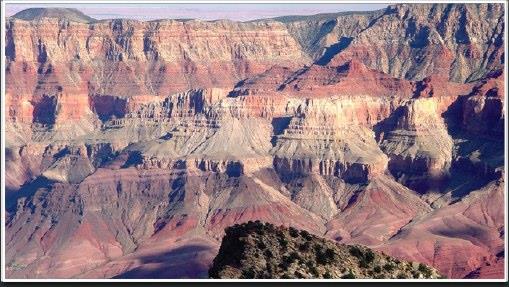
4. Contact Metamorphism - Any layer changed by contact metamorphism must be OLDER THAN THE INTRUSION THAT CAUSED IT.

This baked zone is usually shown by lines extending from the once-molten rock.
What is rock A?
Quartzite. The sandstone was changed by contact metamorphism.
5. Extrusions - molten rock that flowed onto the earth's surface (Lava)
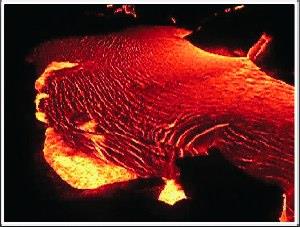
The bedrock it flows over gets changed (metamorphosed) by the heat of the lava.6. Igneous Extrusions: Magma that forced its way to the earth's surface (lava).
Only the bottom of the extrusion has contact metamorphism.
Layers below the extrusion are older, and layers above are younger.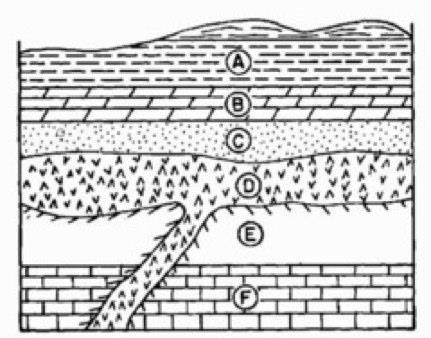

Which is older, layer C or layer D?
D is older if layer D is an extrusion.
7. Igneous Intrusions - when molten rock (magma) squeezes into pre-existing rock layers.
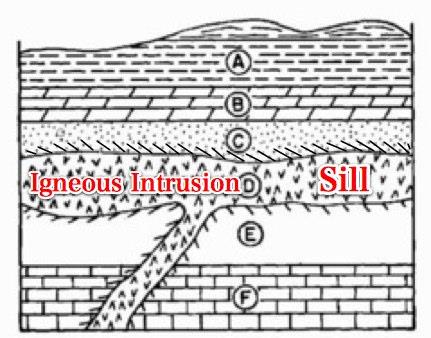
Which is older, layer C or layer D?
C is older if layer D is an intrusion.8. Intrusions are younger than the rocks that they crosscut.
Why? The rocks had to be there to be intruded into.
Crosscutting intrusions.
Which came first, second, and third?
Igneous Inclusions: Any fossil or rock fragment found inside a layer of rock must be OLDER than the rock it is embedded in.
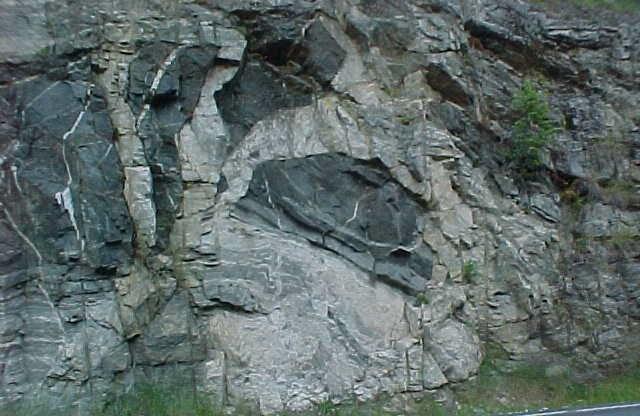
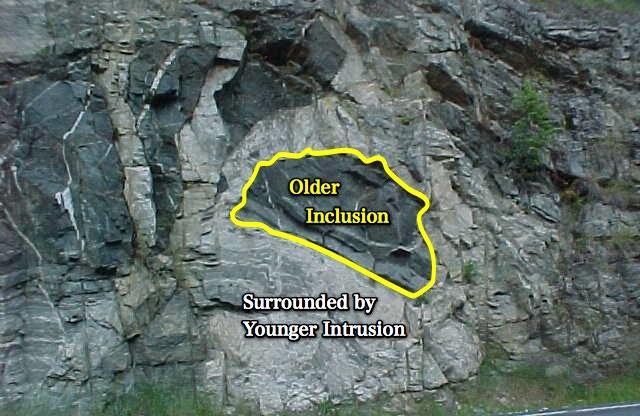
The whitish-colored rock is an intrusion of felsic magma (now cooled) in this image. Notice how it appeared to force its way into the black rock, even going so far as to surround a piece completely. The piece of black host rock contained in the cooled magma is the inclusion. It is older than the igneous intrusion because it had to exist first to be intruded into and have pieces surrounded by the magma.
9. Faults - a crack in the bedrock where movement has occurred.
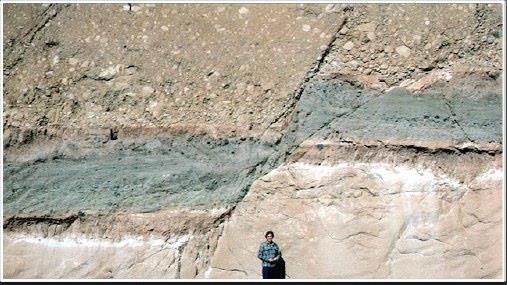
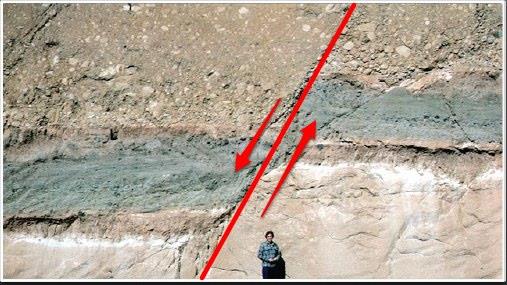
10. Faults are younger than the rocks that they break.
The rock layers had to be there to be broken.
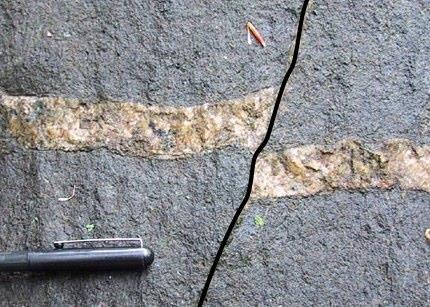
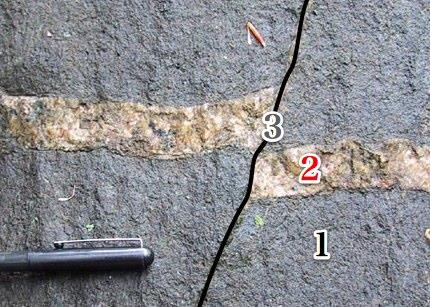
In this image, a small granite intrusion cuts across a pre-existing rock.
A fault then crosscut this intrusion.
If you were to assign an order of events, it would be as follows:
Oldest: Black rock; second oldest: granite intrusion; youngest: fault
11. Folds - when tectonic forces cause rock layers to bend and sometimes overturn.
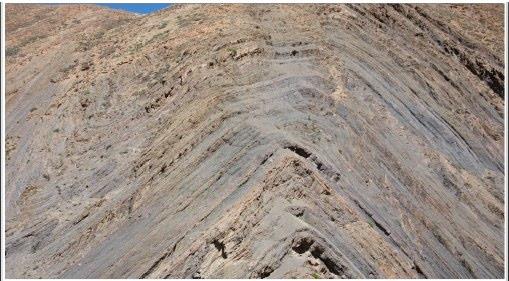

An exception to the principle of superposition (if overturned)
12. Correlation - the matching of rock layers from one area to another.
Rock layers can be correlated using three different methods.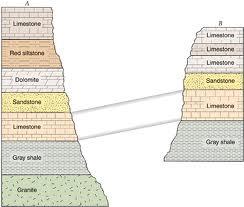
1. By similarities in the rock layers
Correlation by similarities is valid only over small distances. Even in small areas, correlations might be incorrect because similar rocks may form in similar environments millions of years apart, so THIS IS THE LEAST ACCURATE WAY TO CORRELATE ROCKS.
Separated rock layers can be correlated by their similarities, such as:
*overall appearance, *thickness of the layer, *color, *mineral composition, *rock sequence
2. By Examining Key Beds
KEY BEDS ARE DISTINCTIVE LAYERS OF ROCK THAT FORMED OVER A WIDESPREAD AREA IN A VERY BRIEF PERIOD OF TIME.In large volcanic eruptions, ash is scattered over large areas of the Earth’s surface. The scattered ash eventually settles on Earth and is trapped among sediments. Because volcanic ash has a unique chemical composition for each eruption, specific deposits can be detected in rock layers. These volcanic ash deposits serve as age markers that can be used to match up rocks. Meteorite impacts result in a similar scattering of unique ash, so the dating by Meteorite Deposits works similarly.
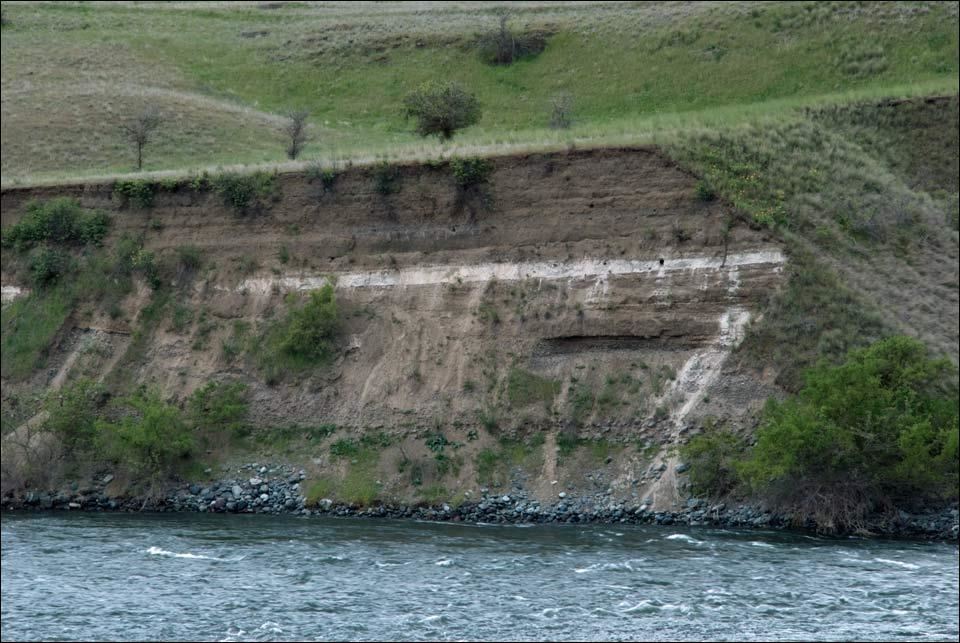
The white layer of volcanic ash shown is an ideal key bed because it is easily recognizable and can be radioactively dated.3. By Examining Index Fossils
Because animals evolve over time, some fossils are typical of a particular time in the Earth’s history. These fossils are very useful for us because we can use them to date the layers of rock they are found in. Fossils that can be used this way are called index fossils; rock layers with the same index fossils can be correlated.Remember how Alfred Wegener correlated many different things to show that the continents were once one (Pangea)?
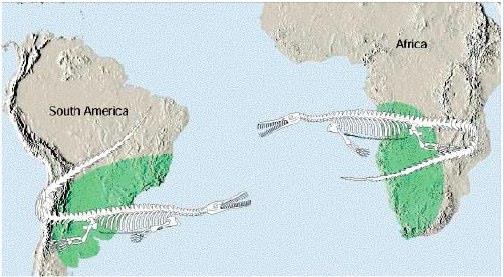
13. Index Fossil - The best method for correlating rocks!
George the Index Fossil
This is George. George lived a very long time ago in an ancient sea.George was happy.
George lived a very long time ago in an ancient sea.George was happy. George proliferated.(what does that mean?)
George proliferated.(what does that mean?)_
_
_
A lot!
Happy Georges!
Unfortunately for the Georges,
A short time later (geologically speaking), all the Georges got really sick.They were so sick that they all died. No more Georges, ever again.(What is that called?)
No more Georges, ever again.(What is that called?)
That was the extinction of the Georges.
And so they settled and were buried in the sediment at the bottom of the sea.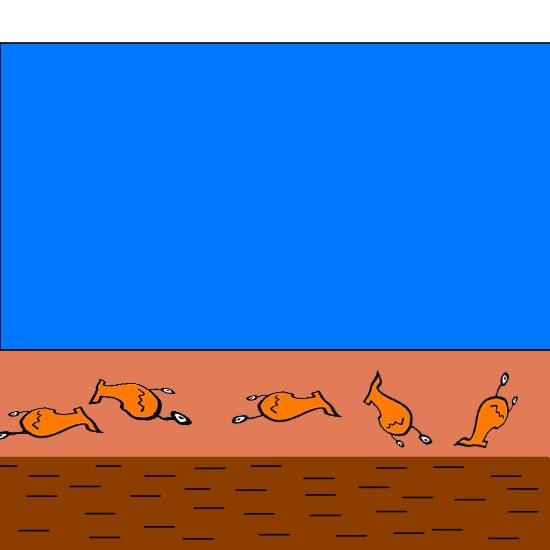
Time went on.
And on and on, and on, and on...Until millions of years later...those sediments that were once on the bottom of the seawere forced above sea level by Plate Tectonicsandalong comes some Paleontologists.They dig up a George!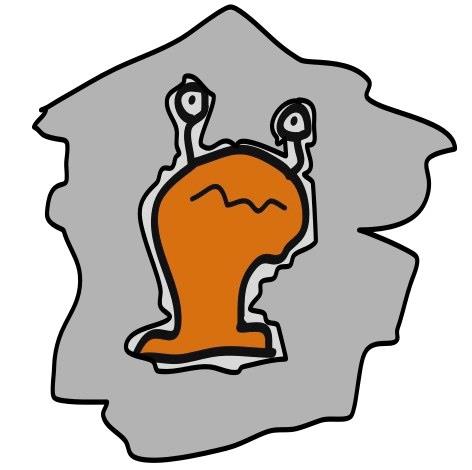
George does not look too happy.But the Paleontologists are very happy!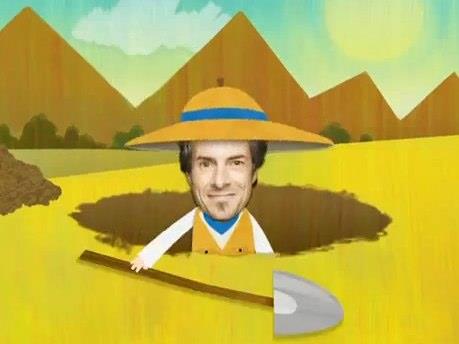
14. Why?Because they know the age of the rock layer.The index fossil is an index to geologic time!
15. Why is George an index fossil?
Because he lived for a short period of time and over a large area.To be considered an index fossil:1. The fossilized must be easily recognizable.
It must be easy to identify and look unique.2. The fossils have to be geographically widespread or found over large areas so we can use them to match layers separated by huge distances.3. The fossil must have lived for a short time, so it appears in only one horizontal layer of sedimentary rocks.
16. What do index fossils tell us?
They tell the age of the sedimentary rock layer.17. Which fossil below is an index fossil?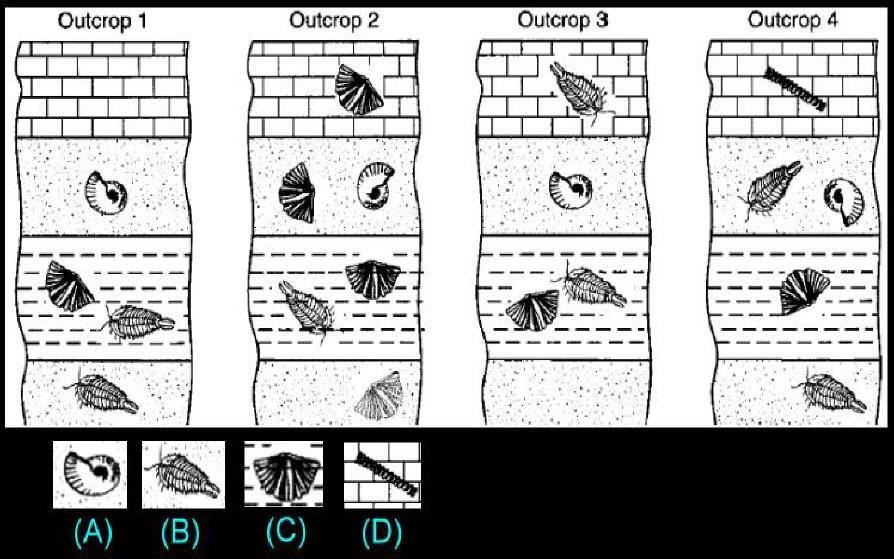
Fossil A because it is found in all the outcrops but only in one layer.Index fossils lived in every outcrop but only for a short period of time.
New York State (index) fossil
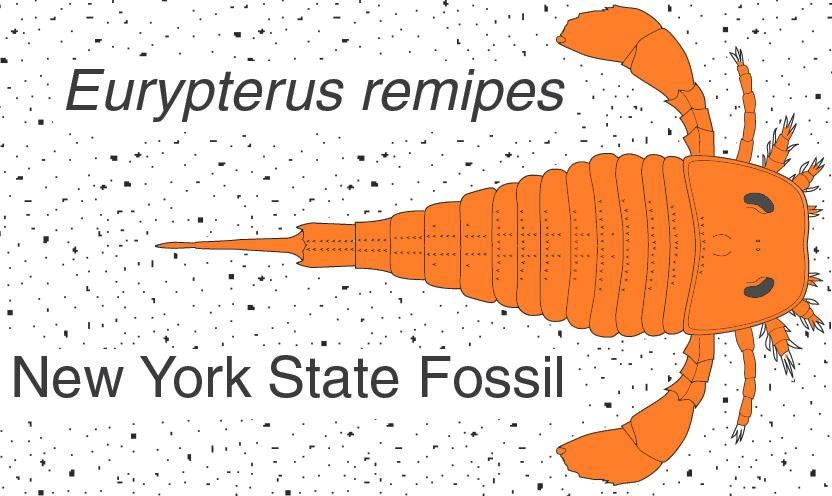 Found on the front page of your reference tables.Do you remember when we found the age of our NYS index fossil in your journal entry "Minutes of Distance"?
Found on the front page of your reference tables.Do you remember when we found the age of our NYS index fossil in your journal entry "Minutes of Distance"?
18. What Era and Period did the New York State fossil live in?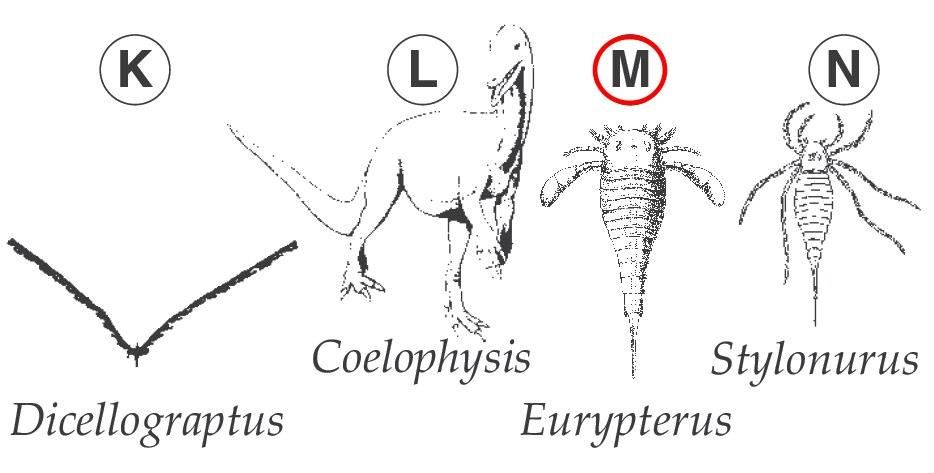
Turn to pages 8-9 on your reference tables.
Find the circled letter M and go over to the columns for Period and Era.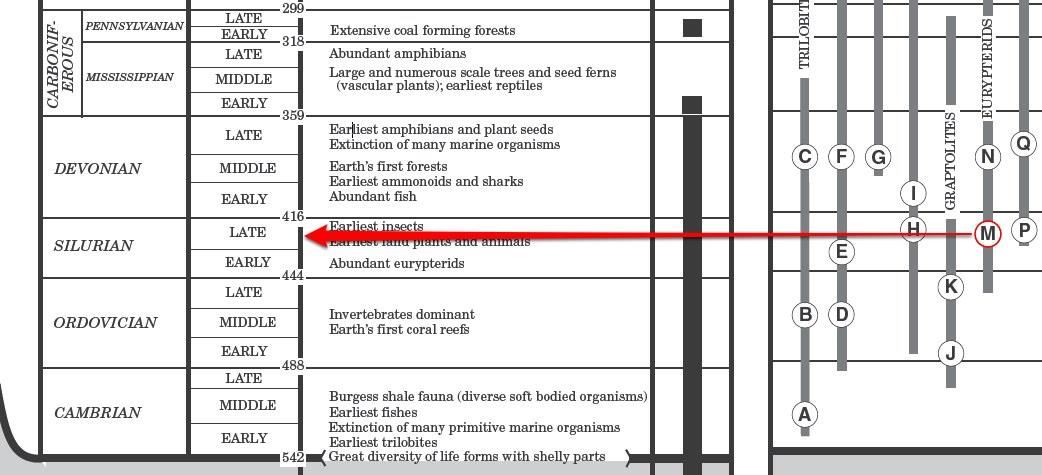
Do you remember this little note?
19. How long ago did Eurypteris live?
444 - 416 = 28 million years (total time period for the Silurian)So what is your best estimate?
Eurypteris lived about 420 - 425 million years ago
Therefore, the rock must be that old!_20. In what city in NY would you be able to find an euypteris?
Did you remember to flip back to the New York State Bedrock map on page 3?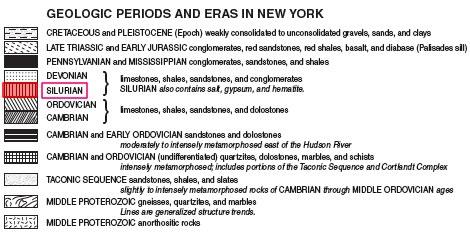

Look carefully! Only two cities on your map would be correct!
The green dots are the correct cities.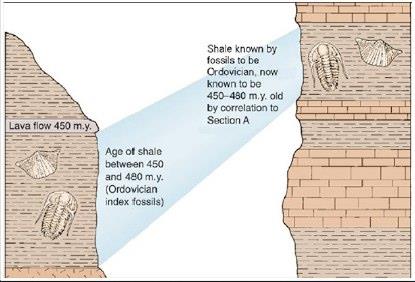
These separated rock layers are well correlated because they are made of the same rock type and contain the same index fossils.
Using these methods, we can determine the sequence of events that cause geologic cross-sections.
Sometimes, the correlations do not conform, and layers/fossils are missing.
A gap in the rock record is called an unconformity.
21. Which rock layer and fossil is missing above?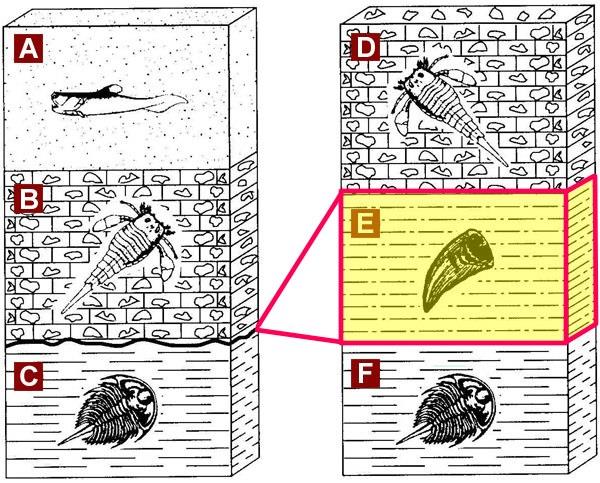
An unconformity is a buried erosional surface.
Unconformities are gaps in the rock record.
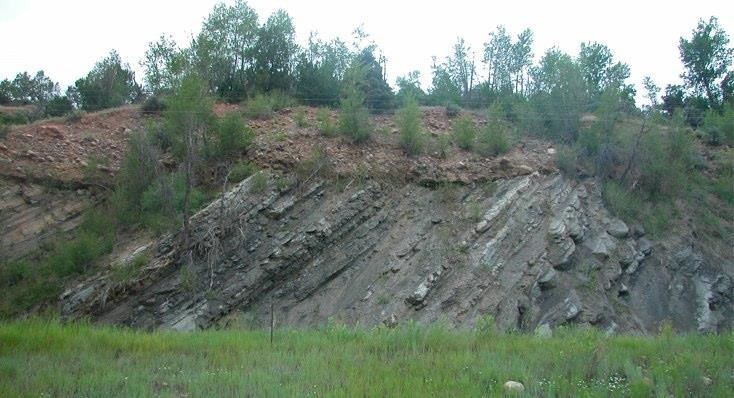
In this image, you can clearly see that the horizontal layers at the top of the outcrop overlie older layers that have been tilted from horizontal and then eroded flat.
Often it takes many millions of years to create an unconformity.
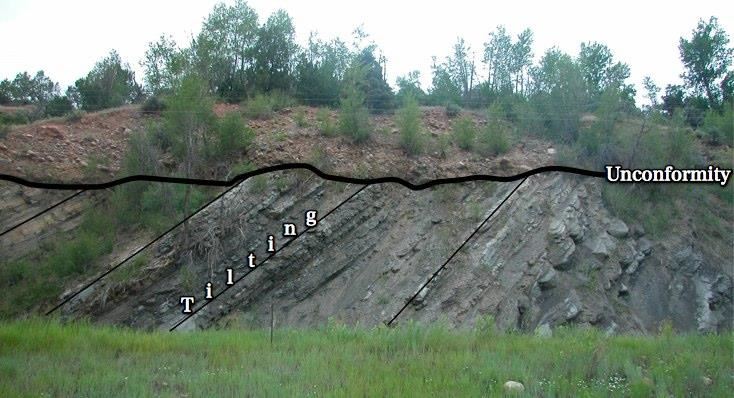
Sometimes many millions of years can be missing by an unconformity!
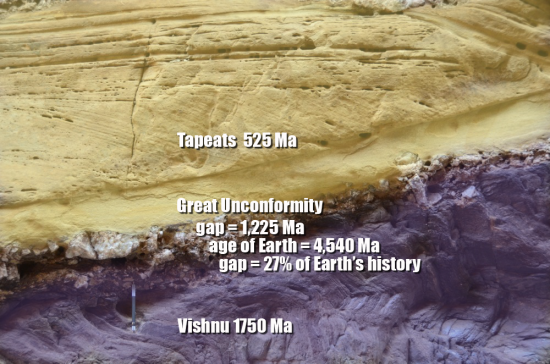
The Great Unconformity in the Grand Canyon!
https://en.wikipedia.org/wiki/Great_Unconformity

Steps to create the above rock outcrop
22. Can you determine the sequence of events that led to these cross-sections?
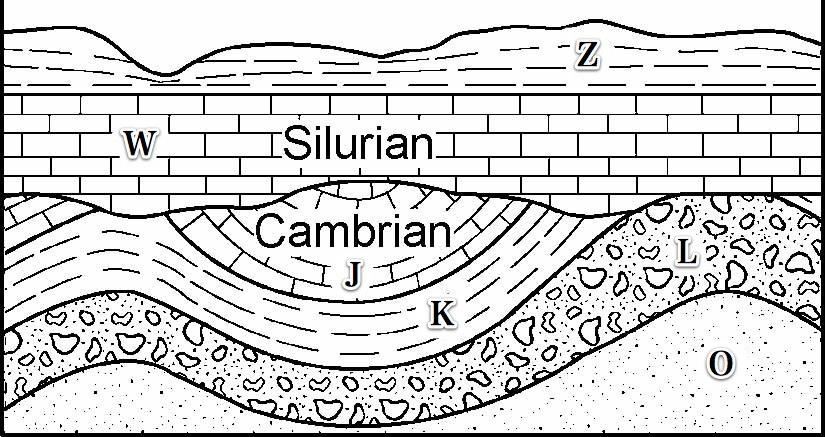
Don't forget folding, faulting, igneous intrusions, unconformity, and erosion.
Youngest
9. Erosion of Layer Z
8. Layer Z deposited
7. Layer W deposited
6. Unconformity (buried erosional surface)
5. Folding of layers O, L, K, J
4. Layer J deposited
3. Layer K deposited
2. Layer L deposited
1. Layer O depositedOldest

23. How about this example?

Oldest
1. Layer T deposited
2. Layer T Folded
3. Intrusion of W
4. Unconformity
5. Layer C deposited
6. Layer Q deposited
7. Intrusion of V
8. Erosion of SurfaceYoungest
Now try these.
24. Don't forget folding/tilting, faulting, igneous intrusions, unconformities, and erosion.
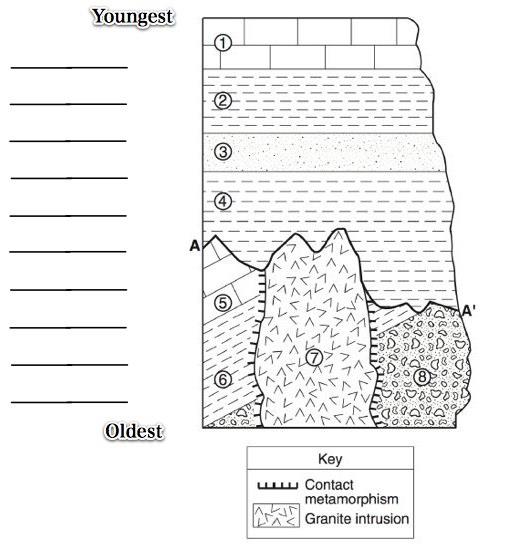
25. Don't forget folding/tilting, faulting, igneous intrusions, unconformities, and erosion.

#26

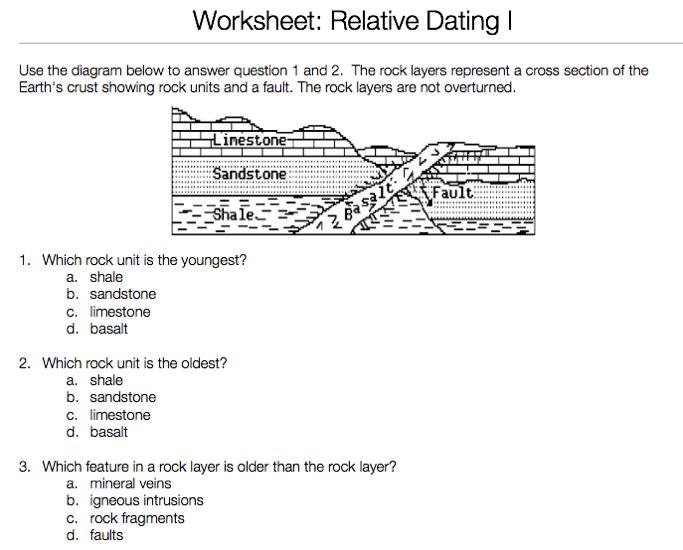

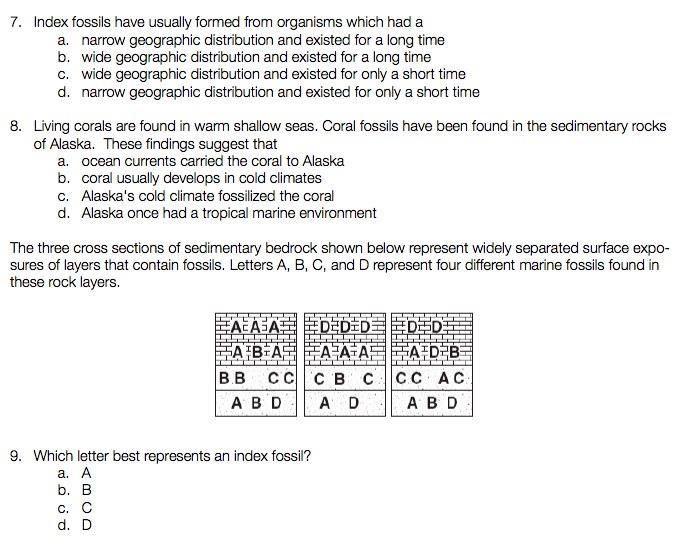

Reflection
What are some of the most important ways geologists determine the sequence of geologic events? What does that tell us about the life and age of the earth?
Bonus: Watch the following movie, and take notes in your journal.
_
_
_
_
_
http://peter-mulroy.squarespace.com/correlating-rock-layers/


